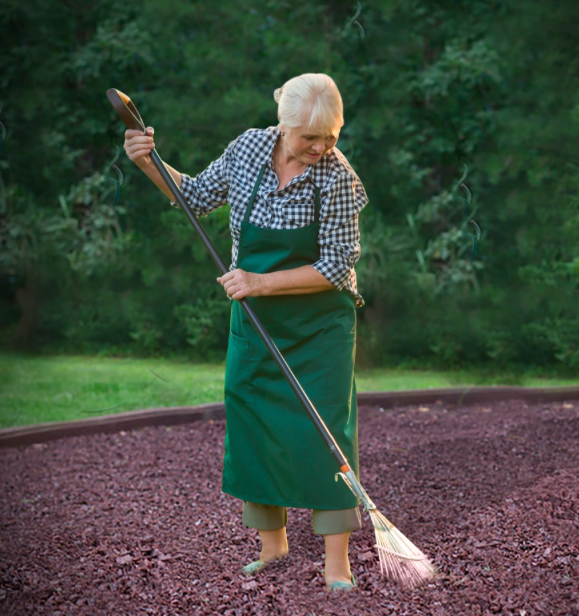On Supplemental Oxygen? Here is what to do in an Emergency.
Emergency Preparedness for People on Supplemental Oxygen
Any time of the year, the power in your home can go out due to wild weather. Lightning strikes, tornadoes, hurricanes, and heavy ice/snow cause considerable damage and can leave you without electricity for hours, or even days! If you are someone who relies on oxygen therapy (supplemental oxygen) to aid in breathing, you need to be prepared for the type of weather events that leave you without electricity to operate your oxygen concentrator. There are two major steps you need to take to make sure you are prepared for a power outage.
1. Call your power company
Start by calling your power company and register with them so they know you are an oxygen patient who requires a constant electricity to keep your oxygen concentrator running so you can breathe properly. The power company will then be able to treat your area as a priority so you will not be without electricity long.
Also, make sure you know how the power company handles these responses. Ask them how much of a priority supplemental oxygen dependent patients are in a power outage, and especially in your area. See if they will provide a generator if the outage is over a certain number of hours. Know how they will respond when the outage occurs so you can better prepare to fend for yourself if it happens.
2. Contact your DME supplier
The next most important thing you need to do is to call your oxygen provider. Keep in mind that your provider is required to supply your oxygen when you need it, even in a weather emergency. Know how your location affects the delivery in either snow or down trees and power lines. Start by asking how much oxygen (in tank form) they think you will need in an outage until they can get to you with more.
Order these extra tanks and keep them somewhere for emergency use. Also, have the delivery person label the tanks with how much time of continuous oxygen flow on each tank. Do you receive liquid oxygen? If so, your provider can provide an extra reservoir for use when there is no power.
3. Be prepared
After you’ve followed these two vital steps, don’t forget other basic emergency preparedness. Make sure additional people (family, friends, caregivers, neighbors) know how to perate your equipment. Keep a record of your equipment’s serial number and model number and copies of your prescriptions, insurance plans, and doctors’ names. You’ll need this information if you have to get a replacement.
Now that you have a plan for your supplemental oxygen therapy, use should the power outage occur, make sure you also remember the basics.
- Find out what type of emergencies or disasters are likely to occur in your area and how you will be warned.
- Pack extra food for you and household members.
- Get a battery-powered radio.
- Register, if possible, for emergency assistance programs. Understand the emergency plans of local organizations you are associated with such as schools, churches, jobs, grocery stores and civic organizations.
- Discuss the plan with family and any caregivers.
- Designate safe zones or shelters and how to get to them. Routes should be visibly posted near a list of emergency contact numbers.
MultiFocal Lenses Contribute to Falls – Smilecast 98
Reduce Risk by Switching from Multifocal Lenses to Single Focus
Seniors who wear multifocal prescription glasses could reduce their risk of falling if they switch to a single-focus lens while walking outdoors. Researchers studied 606 seniors aged 65 and older who used such lenses while walking outdoors.
Half the seniors were given single-focus prescription lenses to use while outside; half multifocal lenses. Overall, falls were reduced by 8% among the single-focus lens cohort. There was a 40% reduction among those who were used to walking around outside,
Podcast: Play in new window | Download
Subscribe: Apple Podcasts | RSS
Our Friday Song of the Week – Best Day of My Life
Our Friday Song of the Week – Best Day of My Life
Failure to Anticipate Distances Leads to Falls – Smilecast 97
Injuries from falls traced to decline in ability to mentally estimate and anticipate stepping and reaching distances.
Professor Carl Gabbard, director of the Texas A&M Motor Development Laboratory, focused on “estimation of reachability” — whether an object is within or out of reach.
Gabbard explains that before actions are performed the mind simulates the action ahead of time and gives an estimate of the possible outcomes or consequences. You can easily relate that to visualizing a golf shot for example.
In older people, the ability to estimate their capabilities declines. Mostly they overestimate. That leads to falls.
Podcast: Play in new window | Download
Subscribe: Apple Podcasts | RSS
There Are Many Benefits of Gardening for Seniors – Find Out More
The Benefits of Gardening for Seniors
Do you want to remain active as a senior? Get into gardening! There are many benefits of gardening for seniors.
Gardening is one of those activities that is proven to be low impact, reduce stress, and improve your overall health and wellbeing. It is possible to overdo it, however, and strain muscles, joints and even end up with lightheadedness. Let’s look at the benefits of gardening for seniors.
There are some quick and simple ways to enjoy your gardening tasks without taxing your body too much, giving you all the benefits of this healthful activity.
Pick the right time
In the middle of a hot July day, with the full sun beating down on your head, is not the ideal time to start weeding! Early mornings or the early evenings are much better times to get down to the harder tasks in gardening. Leave the middle of the day to enjoy your space from the comfort of a swinging hammock or a patio set, complete with an umbrella and a cool drink.
Pick easy plants
Just like people, some plants are high maintenance. Roses, for example, require a lot of tending, protection from the elements, disease, and insects, pruning, and so on, to remain beautiful year over year. Skip those at the garden centre and instead, focus in on a few plants and shrubs that will be easy to maintain.
First off, go for perennials. They come back every year, saving you the effort of replanting. Depending on where you are in the country and what hardiness zone your area is in, you can look at some of the following for beautiful color and ease of care:
- Yucca plants—This is lovely green foliage that grows to up to five feet in width, taking up a good chunk of space, leaving you with needing fewer plants to manage. In particular, the red flowered yucca has been known to double in size in a season and is very hardy in a range of planting conditions, in addition to having beautiful red blooms.
- Yarrow—The blooms on this plant are gorgeous and can last all the way until first frost, returning the following spring.
- Ornamental grasses—While not a bloom, these are excellent to have in raised garden beds or even containers, creating a flowy, textured backdrop to whatever other plants are in with them.
- Campsis climbing vines—This is the kind of no fuss plant that anyone with the least green of green thumbs can grow. Set it up near a trellis and point it in the right direction. It will do the rest.
If you’re worried about plants seeding and spreading, choose sterile cultivars (unable to provide / spread viable seeds) such as ‘blue chip’ buddleias; these are easy to plant and will take care of themselves.
If you’re set on having roses, you’re in luck: in hardiness zones 5-10, you can grow Flower Carpet Groundcover roses, which are resistant to disease and easy to prune. All you need to get started is a good quality soil and some mulch, like Rubber Mulch, that requires little effort on your part but provides significant benefits to your garden.
Pick manageable growing areas
If you’re not up to raised beds and widespread planting, consider alternatives like container gardening. Multiple large pots and urns can be filled with herbs, flowers, grasses and even placed in front of a trellis or next to an arbor, to allow the climbers to flourish. You can access the container more easily than ground level growing, using a stool if you prefer, rather than getting on your knees.
Another great option is called a vertical garden. This is a popular option in smaller gardens where growing beds and other planting areas are more difficult to manage. All you need is a series of rods, creating a hanging area, on which you can attach planters. You can have multiple rows, from the ground upwards. Fill your planters with veggie plants, herbs and flowers and you’ve got an instant privacy wall if you need it and more space for your hammock!
Pick the right tools
A few tools that will make getting the gardening done easier and more pleasant:
- Long handled tools that will allow you to manage your weeding and hoeing without kneeling. Look also for ergonomic handles, which are kinder to the joints, in all your tools but particularly in a shovel, which should also be lightweight, to avoid strains. The only tool where you want to avoid lightweight materials is your garden spade: this should be a solid tool that can handle the harder soils.
- Add a water wand to your hose to create a long handle when you need to reach higher levels, like hanging plants. An easy-to-squeeze trigger handle is a must!
- A garden cart will make it easier to transport your soil from the car, or your plants around the garden. Some even come with a seat, so it can double as a gardening stool!
- Knee pads for those times when you absolutely must get down to ground level.
- Power tools for the bigger tasks. A manual mower is a nice idea but can be very tiresome after a while. There is nothing wrong in deciding that a power mower is more your style!
- For any tool that cuts, make sure that it is sharp! Dull pruning shears or garden scissors will make it that much more difficult to get the job done.
The benefits of gardening for seniors is many. Small adjustments to your choices and purchases will make your gardening activities that much more enjoyable for the long term. Don’t forget your hat, water and sunscreen. Even if it’s overcast out, dehydration and sun stroke are real causes for concern at any age. Above all, enjoy your time in the garden!











